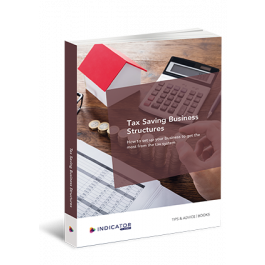Tax Saving Business Structures
How to set up your business to get the most from the tax system
A Tips & Advice Special Report about...
In a nutshell
This Special Report compares the tax pros and cons of different types of business structure ranging from sole traders to companies, mixed partnerships and more. It also looks at how different business structures can be used tax efficiently for specific purposes.
In detail
Tax efficiency is often a key factor when choosing a structure for a business. However, these structures don’t have to be static. For example, a general partnership might be the tax efficient choice for a loss-making start-up but later a company or group of companies could shelter its business profits from income tax.
Choosing the right structure for your business at the right time can save thousands in tax every year. This Special report explores the tax landscape of basic and more complex structures.
We've created this Tips & Advice Special Report especially for...
Existing and new businesses and their advisors who are
- deciding which structure is best for a business start-up
- considering a change of structure for an existing business
- looking for tips to improve a business’s tax efficiency
- weighing up the pros of a structure for a specific project.
In this Tips & Advice Special Report you'll read about...
Table of contents
1. Basic structures for a business
1.1. Sole trader (self-employed)
1.2. General partnerships
1.3. Limited partnerships
1.4. Limited liability partnerships
1.5. A company limited by shares (limited company)
1.6. Other structures
2. General tax landscape of business structures
2.1. What makes companies unique as business structures?
2.2. Who’s taxed on business profits?
2.3. How are profits taxed?
2.4. When do profits arise for tax purposes?
2.5. When are profits taxable and when is the tax payable?
2.6. How does the timing of tax payments compare for different structures?
3. Trading losses
3.1. How are the losses of sole traders treated for tax purposes?
3.2. How are the losses of partnerships treated for tax purposes?
3.3. How are company trading losses treated for tax purposes?
3.4. How does loss relief for different structures compare?
3.5. What’s the most tax-efficient structure for trading losses?
4. Taxing profits
4.1. Unincorporated businesses v companies
5. Multiple and mixed structures for profitable businesses
5.1. Splitting income and profits using more than one structure
6. Tax structures for specific stages and purposes
6.1. Business start-ups
6.2. How can I use my company as a pension fund?
6.3. Using alphabet shares for flexible profit allocation
6.4. What is a family investment company?
6.5. Special purpose vehicles
7. Appendices
7.1. Appendix A
7.2. Appendix B
7.3. Appendix C
7.4. Appendix D
7.5. Appendix E
Special subscribers' offer
£90.00
£70.00
Only if you already have a subscriptionStandard offer
£90.00
Special subscribers' offer
£90.00
£70.00
Only if you already have a subscriptionStandard offer
£90.00

Got a question? Call Customer Services
(01233) 653500


 (01233) 653500
(01233) 653500 







